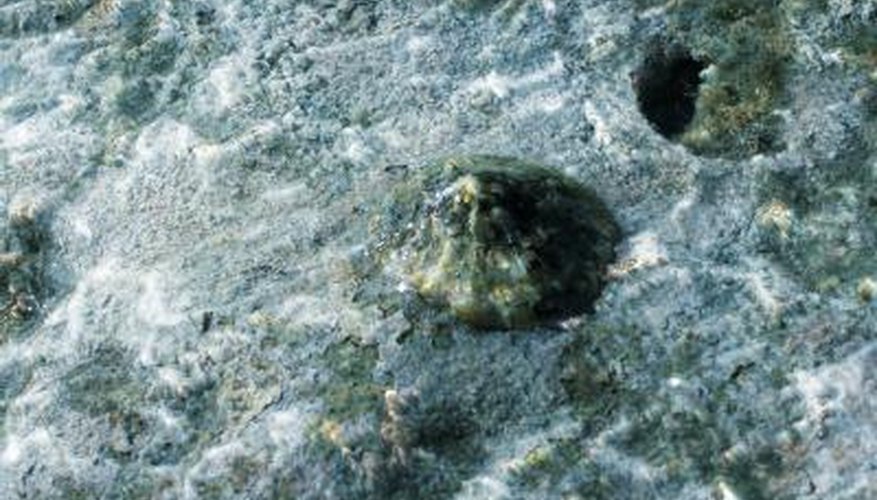Oysters are invertebrate sea creatures, which means they don't have a backbone. Oysters are also bivalves -- they have two shells, joined by a hinge -- and they live inside these shells for almost all of their life. These fun facts can be taught to kids in class, at home, or elsewhere, to help get them interested in nature and biology.
Pearls
Although there is a subspecies known as the pearl oyster, any oyster can produce pearls. A pearl forms when a foreign object, often a grain of sand, works its way inside the oyster's shell. This object irritates the oyster, causing the oyster to produce a substance called nacre, which is a mixture of calcium and protein. Over time, nacre builds up and, years later a pearl is formed.
- Although there is a subspecies known as the pearl oyster, any oyster can produce pearls.
- This object irritates the oyster, causing the oyster to produce a substance called nacre, which is a mixture of calcium and protein.
Breathing
Oysters breathe in a manner similar to fish -- using gills and a mantle. The oyster's mantle contains blood vessels that have thin walls. The oyster "breathes in" oxygen from the water through these walls, and "breathes out" carbon dioxide. The oyster's heart, which is small and only has three chambers, then pumps the oxygen enriched blood through its body.
- Oysters breathe in a manner similar to fish -- using gills and a mantle.
- The oyster's heart, which is small and only has three chambers, then pumps the oxygen enriched blood through its body.
Gender
All oysters have a gender, which means they are either male or female. However, oysters can actually change gender. Around 90 per cent of all oysters under one year old are male, but about 80 per cent of oysters more than one year old are female. In the wild, oysters can live for around 20 years or more, so they might change their gender back and forth several times during their life. A study carried out by the Haskin Shellfish Research Department was unable to verify whether the cause of these gender changes are environmental or genetic.
- All oysters have a gender, which means they are either male or female.
- In the wild, oysters can live for around 20 years or more, so they might change their gender back and forth several times during their life.
Early Life
By the time a new oyster larvae has been alive for six to eight hours, it has already formed a small part of its shell and cilia -- thin, hairlike structures used by the oyster to swim. The larvae will swim around for the first two to three weeks of its life. This is the only time in an oyster's life that it is not sedentary. After this time, the oyster will find a suitable place, such as on top of the shells of other oysters or a clean, hard surface, and attach itself to stay.
- By the time a new oyster larvae has been alive for six to eight hours, it has already formed a small part of its shell and cilia -- thin, hairlike structures used by the oyster to swim.
